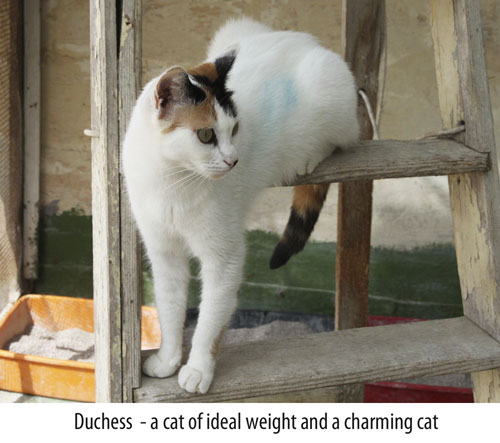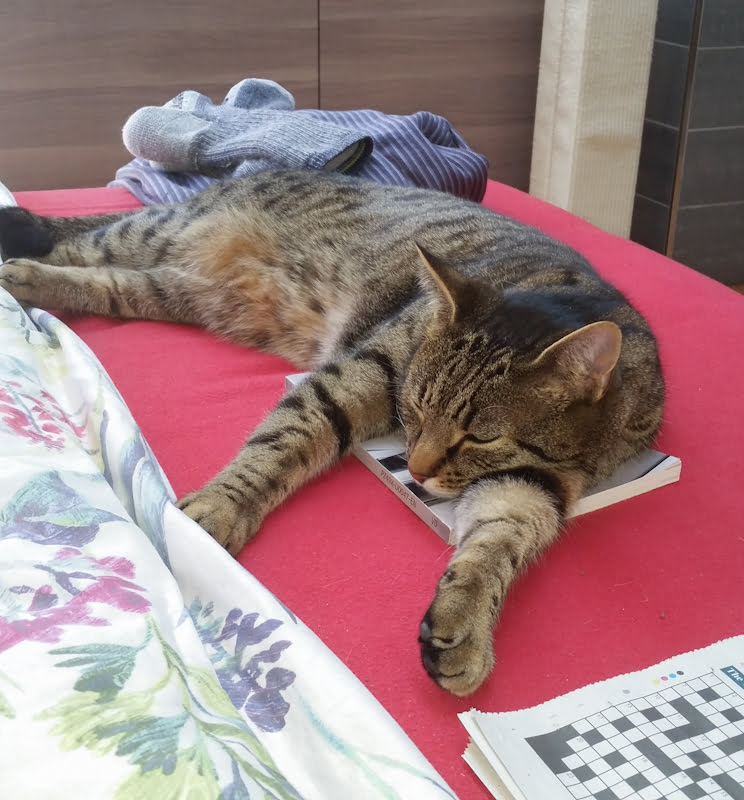Here are some easy, home diagnostic checks to assess domestic cat bodyweight. There seems to be a problem with a lot of cat owners being unable to assess whether there cat is overweight or an ideal weight. It’s actually quite easy to get into that situation. A lot of people, normally middle-aged and older people, gradually put on weight because of lower metabolism and they don’t recognise it. They normalise their extra weight because it occurs gradually until their blood pressure is too high and the doctor tells them to lose weight. So normalising excess weight is quite common.

But if you normalise your own excess weight you can do the same for your cat which is one reason why there are a lot of overweight domestic cats in the world.
If you have lost the ability to tell whether your cat is overweight, you can do some basic checks using what’s called ‘palpation’. This is using your hands to feel your cat. I think the best check is to feel the spine and the ribs. The spine and ribs should be covered by a layer of fat to provide padding and insulation. But when you palpate your cat’s spine you should be able to feel the vertebrae when applying just a slight amount of pressure.
Obviously, whether you feel your cat’s spine or not depends upon how hard you press down. You must not press down hard! You gently apply a little bit of pressure to feel the spine. And in doing that you can tell how thick the subcutaneous fat is which is covering the spine.

It’s a bit harder to check a cat’s fat coverage of their ribs. One reason is that a cat might not keep still which makes it harder to be more precise. But the fat should not be too thick. You should be able to feel the ribs without applying anything but a small amount of pressure.
Dr. Fiona Esam, a veterinarian in New Zealand, advises that if your cat is obese, “when you put your hand on the side of the ribs, you have to really push in with your fingers to feel the ribs because you have to push through all of that fat”. I’m not sure that I like that advice because it encourages people to push hard which is dangerous. But the point she’s making is that you should be able to feel the ribs without pushing hard.
So, I would advise checking the ribs and spine to feel for the amount of fat covering them. Also, when looking from above, you will see that a cat has a waist (see image above). This is just in front of the thigh of the hind legs. There should be a slight curving indentation of the body in that area. It should beseen but it should not be pronounced.

And I wouldn’t worry about the belly flap. A lot of cats, to varying degrees, have a belly flap which might swing from side to side when they walk or jog. My cat’s belly flap is very noticeable and I like it because it makes him look like a wild cat. It is perfectly normal and does not indicate obesity.
Some people say that the belly flap is an adaptation to allow the cat to be more flexible in lengthening their stride which in turn allows them to run faster.
Also, you can always talk to your veterinarian to ask her what your cat’s ideal weight should be. You might just do that as an extra job at the next consultation whenever it occurs.
Of course, there are underweight cats too. It’s unusual to see underweight domestic cats in a home. You’re more likely to see underweight feral and stray cats for obvious reasons. The same checks supply. The spine will be raised and very easy to feel through palpation. The same goes for the ribs. Arguably, it is more obvious that a cat is underweight than overweight and therefore a simple visual, overall check will normally suffice.
If you want me to comment on your cat’s weight, simply upload a photograph of your cat in a comment on this page and I will respond promptly.
SOME MORE ON WEIGHT:

